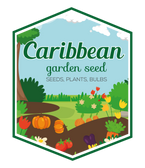
Ramp,Wild Leek Seeds (Allium tricoccum) Perennial,
- Get free shipping to lower 48 states on orders $54.95+ (Most Items), excluding live plants, plant bulbs, and black plastic nursery crate.
- Most orders are processed by the next day !
- Safe Seed Pledge
- Select your desired size and/or color from the available options.
PLEASE USE DROP DOWN BOX TO ORDER
Ramp,Wild Leek Seeds (Allium tricoccum) Perennial,Considered by many to be the best tasting member of the onion family
Characteristics: medicinal plant/beneficial plant/culinary herb
The whole plant is edible. Until a few years ago you would never have seen it on a menu, but these days is definitely a chefs' favourite. The flavour is softer, more pleasant than cloves from garlic bulbs, the smell less assertive. Leaves, when blanched and blended to a purée, have a vibrant colour that brings food, especially white fish, to life.
The glossy green leaves are delicious in sandwiches, used sparingly in salads, or added to sauces and dressings. It also makes splendid pesto. The bulb can also be eaten raw or cooked, and can be harvested all year round, though is best used when the plant is dormant from July to December or January. The flowers, raw or cooked are somewhat stronger than the leaves; in small quantities they make a decorative and very tasty addition to salads. The flowering heads can still be eaten as the seed pods are forming, though the flavour gets even stronger as the seeds ripen. It is perfect for making natural wild garlic butter.
Cows that have fed on ramsons give milk that slightly tastes of garlic. Butter made from this milk used to be very popular in 19th century Switzerland.
Ramsons
Plant
Allium ursinum â known as ramsons, buckrams, wild garlic, broad-leaved garlic, wood garlic, bear leek or bear's garlic â is a wild relative of chives native to Europe and Asia.
Scientific name: Allium ursinum
Higher classification: Allium
Rank: Species
Britain's native wild garlic is a perennial herb. Their white flowers carpet the banks of the stream in our ancient woodlands in spring and their fragrance hangs in the damp woodland air.
Wild Garlic starts growing underground in late winter and its striking white flowers appear between April and June, contrasted against the lush green foliage. It will grow to 46cm high. Seeds ripen in July, when the plant dies back completely, allowing other plants to grow in the same place. Mixed with Bluebells, a woodland planting of Ramsons can look spectacular. The plant can grow in many conditions but prefers moist and slightly acid soils. Once established, the plant can propagate vegetatively to cover a significant portion of the woodland floor.
Plant Description
Life Cycle: Perennial
Family: Alliaceae
Origin: Europe, Russia
Special Features: Wide leaves, garlic scent, thrives in woodland setting. Bulbs are edible, and young leaves can be used in salads and many other meals.
Basic Colour: (white/cream)
Flower Colour: white
Winter Hardiness Zones: Z3 - Z9
Foliage: deep green, wide, strappy
Growth Habit: bulbous/clumping/low-growing
Height with Flowers: 25 cm
Spacing between Plants: 30 cm
Soil Requirements: moist/humus rich, fertile
pH value: 5.8 - 6.8
Location:
Ramsons â Wild Garlic
Growing in woodland and shady damp places we use ramsons for putting raw into sandwiches, eating on its own or for adding flavour to pot.
Garlic is good for immunity, and helps lower your blood pressure. When eaten by itself it can be fairly strong, so have a bottle of water handy.
Sowing:
Sow in late winter/late spring and late summer/autumn.
The seeds need a moist loamy soil with a damp shady environment. Sow either in situ or in a cold frame.
Sowing Indoors:
Wild Garlic sets seed profusely and germinates well. Plants should be large enough for planting out by the third year.
Sowing Direct:
Scatter the seed on bare soil under trees. Lightly roll the soil but do not rake over. Seeds can sown at a rate of up to 200 seeds per square metre.
Aftercare:
Bare soil is open invitation to weeds, so carefully remove any stray seedlings. Keep plants well watered, during dry spells â a mulch will help to retain moisture over summer.
Division:
You should divide the bulbs in the last weeks of summer after the plant dies down. Plant the bulbs fairly deeply into their permanent positions, where assuming conditions are right, they should flourish.
The bulb is edible but is pretty small - like a cultivated garlic clove - and takes 3 years to develop. Thus wild garlic is mainly used for its leaves which means it can double as a herb and a provider of garlic taste. If you grow it in your garden, it is a waste to harvest the bulbs unless you need to thin them out.
Companions:
Wild Garlic can inhibit the growth of legumes, like peas, but grows well with most other plants, such as carrots, chamomile and roses.
LET OUR CUSTOMER SPEAK FOR US

![[Seeds] - Caribbeangardenseed](http://caribbeangardenseed.com/cdn/shop/files/gift-card-gift-card-1_1024x1024_dfa857db-9150-4315-a362-7f0bb3fb9c47_60x28.png?v=1722895789)







